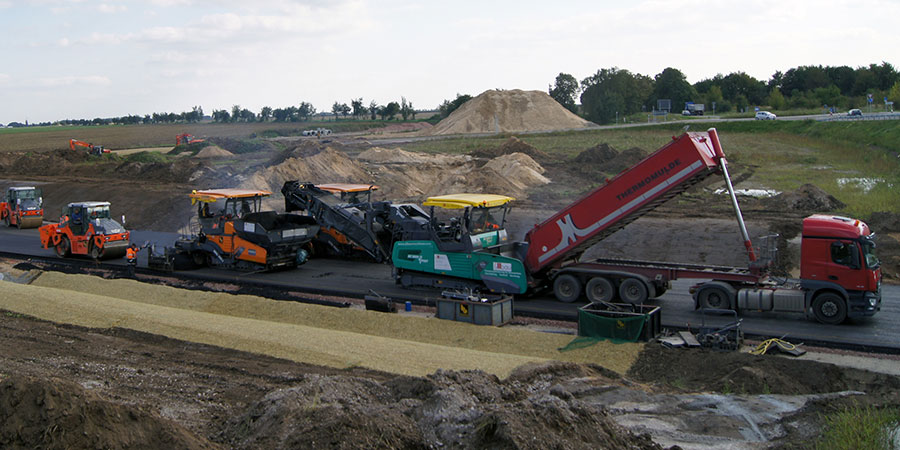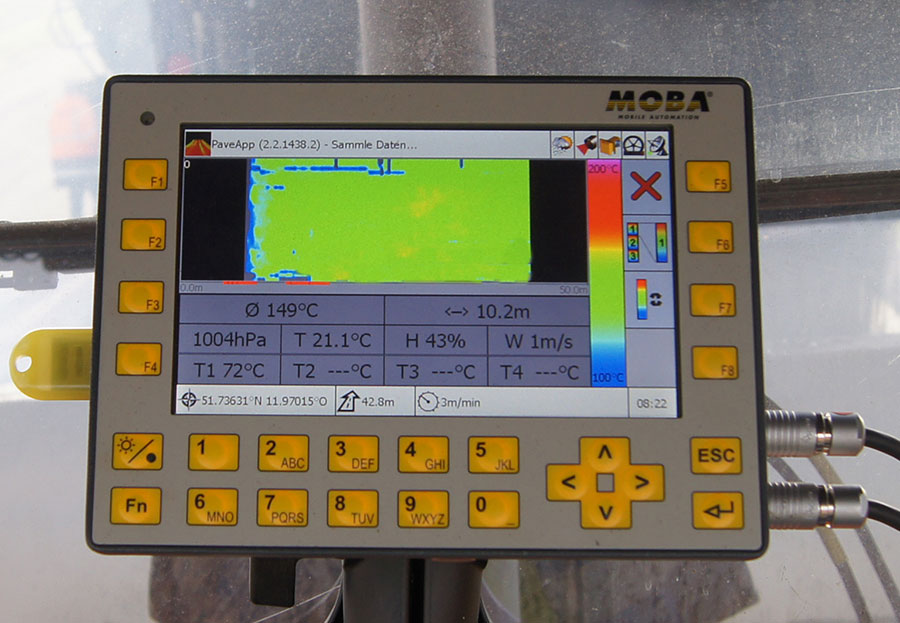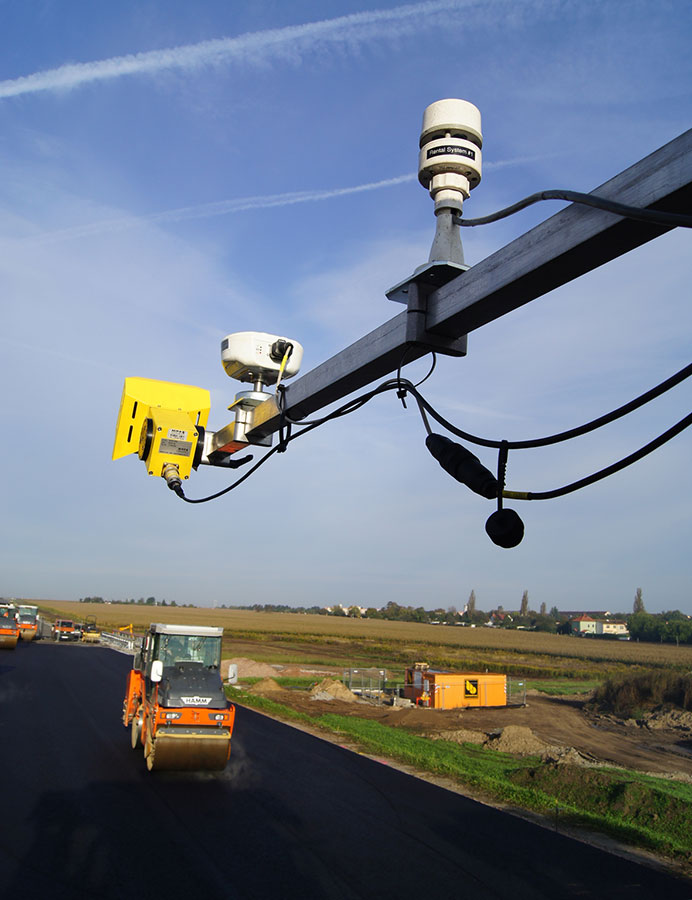Wednesday morning, 7 a.m. on the B6 near Köthen. The sun is just rising; there is already a buzz of activity on the roadway: instead of cars, construction machinery is trundling over the new bypass road currently under construction. The two pavers are running, the mixture buckets cleaned, machines filled with fuel and here and there a screw tightened.
Hectic activity ensues even before paving actually gets underway. Thus, not much time remains to install additional components; no matter their importance. The daily mounting of the PAVE-IR™ Scan quality control system is, nevertheless, unproblematic and quick since the individual MOBA devices are speedily and easily installed. The display is secured in the cab with a click, the weather station and a GPS antenna are mounted in an instant with magnets and even the scanner is quickly installed with just one bracket. After just a few minutes, the installation team and the two asphalt pavers are cleared to start and the PAVE-IR™ Scan is ready for operation as well.
As the first truck rolls slowly backwards to the feeder, the auger begins to turn and the steaming mixture drops into the bucket. The pavers begin to move with a short jerk, the screed operator re-adjusts the screed width and the infrared scanner of the PAVE-IRTMScan system begins to rotate. With this movement, the scanner scans the temperature of the paved material at 61 measurement points across the entire paving width. After the first few metres, a clearly recognisable colour profile appears on the display. This precisely plots the surface temperatures of the asphalt during paving. Environmental information such as temperature, wind and the speed of the paver is also displayed and recorded. Downtimes can thereby be detected as can poor weather conditions.
This data is important, on the one hand, during the actual paving, as it can be used to adjust the process chain, e.g., compaction can be immediately performed where the material is nearing the lower temperature limit for optimum compaction. On the other hand temperature data can be used for later analysis to optimize the entire process chain, from the mixing plant to compaction, and can thereby considerably improve the road quality and its longevity.
Over a width of 11.50 metres, the asphalt paver lays a flat surface over the lower asphalt layer, spreading 10,000 tons of material on the binder layer that had been laid the previous day. "Over a length of four metres, the accuracy must be plus/minus three millimetres. That's how it is in the specifications", explains Thorsten Schmidt from the paving team. The paver achieves this accuracy without problem using a floating screed to lay the new four-centimetre-thick layer on the asphalt laid the day before. "We paved the lower layers with levelling technology. As a result, the base is already very exact and no big irregularities are copied".
The specifications for paving, including the use of a quality control system, are defined in the tender issued by the state construction authorities. These authorities also evaluate the data collected by the PAVE-IR ScanTM system during asphalt paving. "With this temperature data, it is possible, for example, to precisely determine whether the paver stopped because there was no more material. This would mean that the delivery chain was not very well coordinated. Using this information, the process can be improved in the future", explains Marcus Watermann, MOBA product manager. The data is even more important, however, for documenting the temperature during asphalt paving over the entire area. "The regional authorities can use this data to see where the asphalt was not paved in the optimum temperature range or with large temperature differences", says Marcus Watermann. Larger temperature differences during asphalt paving or the paving of material that is either too cold or too hot often leads to premature degradation, cracks or potholes in the asphalt hence the usefulness of PAVE-IRTM Scan. The temperature data is helpful to the contractor as well. He is able to use this data as proof that the material was homogeneously paved in the appropriate temperature spectrum, i.e., that a high-quality result was achieved. The contractor can also use the MOBA PAVE-IRTM Scan data to optimise his daily work.



